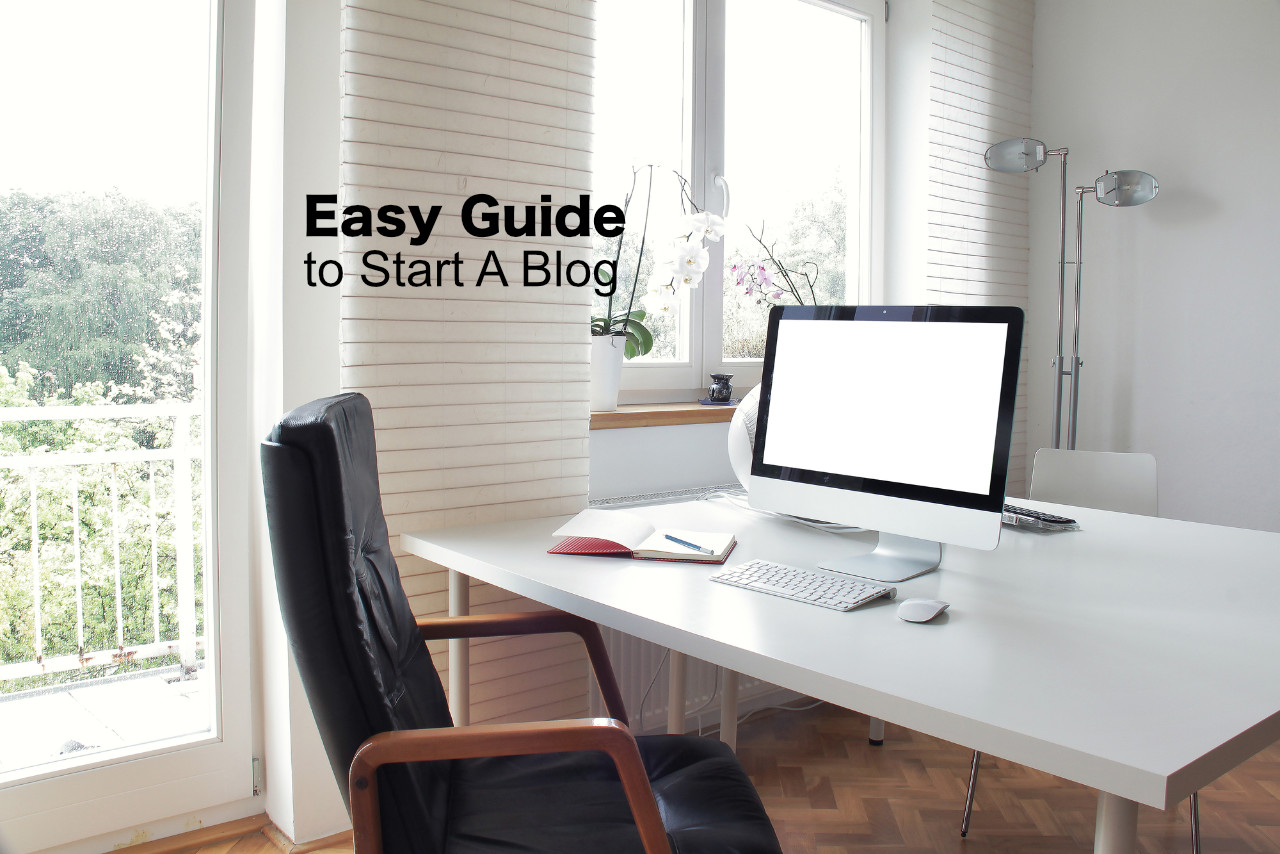So, if your dream is to be a blogger, then it can come true TODAY! Here we are to help you on your way, providing this easy guide on building a blog. Following the tutorial, even a newbie can succeed. Here we’re going to prove that it’s easier than you think. Herewith, keep on reading to make sure of it by yourself. Before proceeding ahead- learn what a blog is and the purpose of blogging.
Start a Blog Today in 7 Easy Steps
It’s always a little bit frightful to be a beginner. There are a lot of things to learn, understand, and do before you develop a reputation. Yet, remember that every influencer and famous blogger used to be a newbie one day. Besides, we prepared a step-by-step instructions covering all the aspects to mind when launching a blog that will clear the process. Only 7 easy steps are between you and your dream. Let’s move on!
1. Define a blog niche and name
Before we go to launching a website, here are two more things to define first: Everything depends on your goals. So, if it’s a personal blog, then pick your bailiwick or theme you’re a true expert in. It’s the only way to bring value to the readers. When you aim to boost the business, then it’s obvious that the blog must be relevant and demonstrate what you do/offer. Otherwise, what’s the point? You confuse people, and they’ll leave. However, the blog must be entirely unique and useful. Don’t just follow anybody or mime somebody; share your expert commentary, experience, vision, knowledge, etc., to capture and retain the customers. As soon as the niche is determined, it’s time to give the blog a name. It’s a domain that the visitor sees first. That’s why it should represent:
Either the main topics you’ll be writing about; The trading name or your first/last name, or a mix of both; A quirky and/or amusive word combination, etc.
It should be unique, eye-catching, easy to remember, easy to type, and easy to pronounce. Also, you should better opt for a short domain name. By doing that, you’ll simplify the process of building a brand, promoting the blog, and, as a result, monetizing it.
2. Pick the CMS and get your blog online
The platform plays a key role. Thus, the suitable CMS chosen affects all aspects of your project: from creation smoothness to the way you maintain it. Currently, WordPress.org is the unquestionable leader among the platforms used for blogs. In addition, though, Blogger, Ghost, Tumblr, and some other CMSs offer you a wide range of tools for building unique and well-working blogs too. Today there are two main kinds of CMSs available to choose from: If you select the latter, then it’s critical to utilize trust-and-true hosting. Mind the fact that all the blog files (images, videos, text, etc.) will be hosted there. Besides, it’s the server to keep the website reachable for the users 24/7. That’s why it’s important to select a stable server. BlueHost is a widely used service for blog sites. However, you can pick any that suits your budget, demands, and purposes. Just compare several hosting services before making a final decision.
3. Design your blog
“The first impressions are most lasting.” If your blog looks like an amateur’s one or it’s not nice enough, no one will trust you and close the site before reading. The competition is tough. Herewith, it’s critical to create a pro-looking website. The blog design must be recognizable. It’s to appeal to your users and grab their attention. But how to manage that? Commonly, platforms have a library of free and paid themes/templates to use. Hence, for instance, WordPress provides several ready-made themes. Herewith, you can use any template and make a pro-looking site even if you’re not a designer or can’t afford to hire one. Yes, such templates simplify and hasten the process. Make the following 4 steps, and you’re ready to go: Anyway, designing the website takes into consideration its usability. The navigation must be intuitive with a user-friendly interface. Thus, the users can find any information with no sweat, even on the first visit. Yes, it must be beautiful but practical at the same time. Besides that, check the responsiveness of the theme chosen to ensure that your blog looks good on mobile devices. An adaptive site is not a recommendation but a MUST-HAVE. It’s a well-known fact that mobile users are prevailing nowadays. Herewith, if your blog doesn’t adapt to smartphones or tablets, then customers will leave it. So, test your blog on various mobile gadgets before launching and implementing any changes. You can get royalty and attractive stock photos and illustrations at Depositphotos.com. In addition, we provide a very special “Depositphotos coupon code techprevue15″ to get an extra 15% discount.
4. Build a content strategy and create your first blog post
A good content strategy is required to succeed. Hence, before writing a word, you’re to plan out the content pipeline for the coming weeks/months. Do the following things:
Define your goals and set business objectives; Research the niche — determine your leading competitors, learn their strategy, and do better; Learn your users and their needs, and reveal their pain points to create appealing and competitive content that will work.
After gathering and analyzing the data, sit, and create a list of topics to observe. You can use Trello, Google Docs, Airtable, and other tools to map out the content and don’t miss a thing. All the static content and pages? Including but not limited to About Us, Contacts, Footer, Market Kit, Sidebar, etc., must be added to your plan. Such content is significant too. Only after that, turn to your first post. Deciding on the topic for the article, keep in mind that it’s an introduction. Thus, a few crucial facts about you/your company, idea, and blog are covered in the post. Write for and to people, not bots. Blog — is a long conversation and discussion with your users. Each piece of content added to your blog is to reflect that. Talk to the visitor as if they are sitting next to you.
5. Use visuals and videos of the premium quality
Just imagine our brain processes visuals 60,000 times faster than text. Yes, plain text doesn’t work anymore. People will leave your blog without reading a line if no single illustration is added. It’s a weighty argument to add some infographics, images, charts, GIFs, animations, videos, and other visual content to the posts. Yet, the quality DOES matter — it must be premium. Don’t panic! Presently, there are many solutions and services to use to create eye-catching and captivating blogs. We recommend using VistaCreate. It’s an online editor with 25 000+ ready templates in 45 design formats, 500,000 premium images, 100,000,000 HD stock photos, 8,000+ animated designs, etc., on offer. You can find/modify and/or find visuals to meet your demands and achieve your objectives. No skills are required. Follow the instructions and enjoy the results.
6. Set a publishing schedule
It’s crucial to plan what and when you’ll write. Publish articles constantly, and your readers will be more likely to revisit your blog and stay engaged. By scheduling various posts on different days, you can better test what kind of content works and appeals to your users. Constant updates of your blog are good for SEO as well. All the tools mentioned in step 4 are useful on the stage too. Use them to map out the content, track the tasks’ status, and measure the quantity of work.
7. Market and monetize your blog
Promoting is the starting point. Select out of a litany of ways to market the blog via social media, ads, SEO, etc. Utilize all the channels to make your site visible. Therefore, it’s a way to drive traffic to a website, tell the world about you, and gain credibility. When you’ve managed to attract enough visitors, monetize your blog website. Here are our tips on increasing lead generation and raising money on blogging:
Sell personal products/services — it can be courses, apps, knowledge, etc.; Use advertisement space on your site; Sponsored content; Brand partnership; Affiliate marketing; Network with other bloggers.
You’re not limited by only one way to choose. The best variant is a combination of all the ways. One more piece of advice for you: always learn, test, and verify the products and companies you’re going to partner with. Better not risk the credibility of the readers. Reputation is everything for the blogger. Just bear in mind that. You must read the blogging ideas for starting a blog.
Takeaway
Blogging provides a myriad of opportunities in 2020. Besides, today it’s much easier to get started than ever before, thanks to the wide range of tools available to utilize and simplify the process from creation to service. This step-by-step instruction covers all the aspects to mind when launching a blog. It’s created to help you succeed, motivate, and guide you to start your professional blog today. Good luck!

